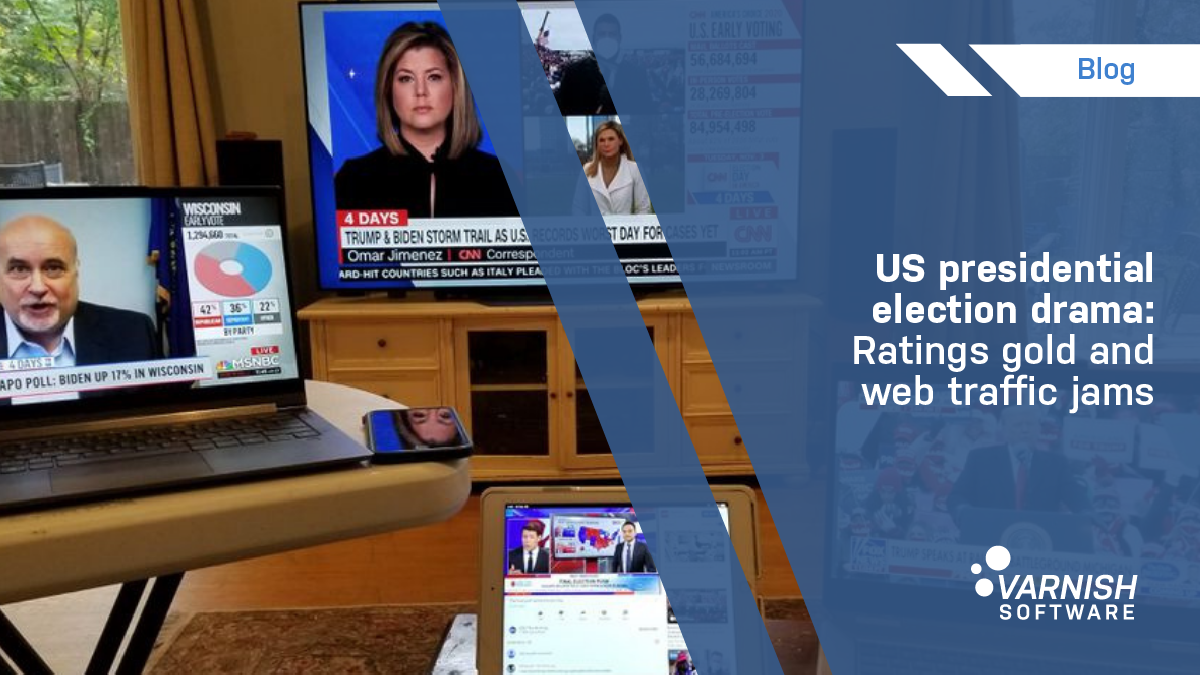US election night news coverage during presidential election years are usually “event” TV, so attracting higher-than-normal traffic is expected. But 2020 has created what can only be described as a sustained spike in live video streaming traffic, as vote counts rolled in and revealed many states’ races too close to call. Traffic to news sites more than quadrupled.

The suspense kept voters in the US and viewers worldwide glued to their devices, trying to stay on top of changes as they were called. Tuesday (Election Day) ended without a clear winner, meaning that the heightened traffic persisted for a few days until Joe Biden was officially declared the victor on Saturday. A number of news outlets experienced this boost in traffic to their websites in the days after Election Day as well. For outlets like CNN, Election Day 2020 proved to be the biggest day in their history and it broke records for New York Times, NBC, CBS and other channels and sites throughout the week.
According to Akamai, live streaming traffic peaked at about five times higher than normal, and broke the previous all-time record from 2016’s presidential coverage by doubling the traffic levels seen that year.
Axios, relying on data from Adobe Analytics that looked at 400 US news sites and 150 billion visits and app launches on Election Day versus an average, random day’s traffic from October 2018, highlighted the following:
- National news sites experienced a 311% increase in traffic, i.e. 4x the norm
- National news sites got 5x as many visitors on the evening of Election Day
- States with the closest vote totals drove the most traffic to news sites, i.e., Georgia, Virginia, Arizona, Florida and Texas
- Traffic was international: 20% of Adobe’s traffic came from outside the US
Tech prep for the presidency
It’s one thing to be ready to assume the presidency, but entirely another, much more manageable endeavor, to prepare for streaming presidential election results and updating news sites to reflect the latest updates.
As always, popular sites have to scale up to meet demand. Most are ready, as previous election cycles have prepared them for both unusual spikes and for sustained levels of atypical traffic levels over several days. But it’s worth noting some of the key technologies and content delivery strategies for this kind of readiness and constantly changing information:
- High availability/redundancy: Ensure uptime
- Scalability: Make sure your audience can access the content they’re looking for
- Caching and cache invalidation: Control caching at a granular level
- Prime for smooth live streaming across devices
Media organizations and streaming companies alike have turned to Varnish for securing their content delivery and building their own content delivery networks.
/VS-logo-2020-197x60.png?width=136&height=60&name=VS-logo-2020-197x60.png)




